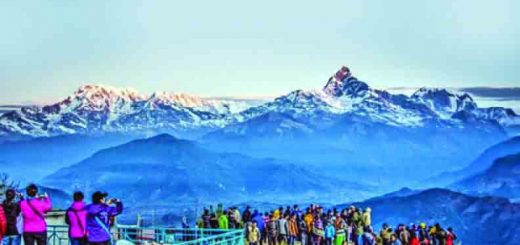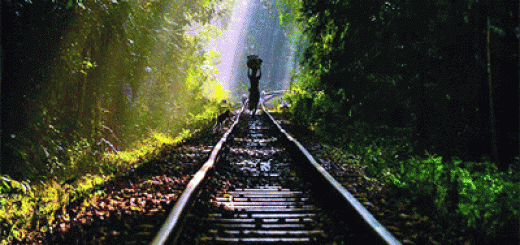Panam City
Sonargaon became the capital of Bengal during Isa Khan’s ruling. It was the administrative center of medieval Muslim rulers in East Bengal. The area falls under present-day Narayanganj District, Bangladesh. The name Sonargaon survives as Sonargaon Upazila in that district today.
Panam City was the center of the upper-middleclass people of Sonargaon which was established in the late 19th century as a trading center of cotton fabrics during British rule. Hindu cloth merchants built their residential houses following colonial style with inspiration derived from European sources. After the Indo-Pakistani War of 1965 and the Muslim-Hindu riot, Panam City has reduced into a vacant community.
Few months back, we planned to visit this old city. We went by a bus from Dhaka (Gulistan which took around 1 hour to reach. It needs to get down from bus at Mograpara Crossing. From the crossing, we took a rickshaw and told the rickshaw puller to go to Panam City. Now this area is protected under the department of archaeology of Bangladesh. Panam still possesses three brick bridges belonging to the Mughal period: Panam bridge, Dalalpur Bridge and Panamnagar Bridge. The existence of these bridges and the canals enclosing the site on three sides is indicative of its being a sub-urban area of the medieval city.
The road which leads from the Mograpara crossing on the Dhaka-Chittagong highway in the direction of Panam extending up to the Neel-Kuthi looks like a dividing line between medieval Sonargaon and the present Panamnagar, the only surviving relics of the Panam area. The Panam Township stands on the east of this road opposite Aminpur, and a one-arched humped bridge leads from the same road over a narrow canal to the main street of Panamnagar. We moved through this way. We also entered the narrow paths (gali between two building) to watch the buildings from the back side. Some of the buildings are renovated recently. When we were walking through the Panam city, it gave us a wonderful feeling – walking down the capital city of the ‘Isa Khan’. This place was the center of the rulers.
We found that due to flood or some other reasons some structures were severely damaged and we found out cracks in many walls. When the Mughal took over the control of Sonagaon, they constructed highways and bridges and made a new look of Sonagaon and Panam City. Mughal era was the most significant era for all the region of sub-continent. Panam city has no different for this circumstances. Huge amount of construction works and developments in the life of city dweller had been occurring in the time of Mughal.
The path of the bridge is formed of bricks arranged circularly. These surroundings of bricks are set aside in place by several large pillars. Its length is 21.95m and width 4.72m. The bridge in the beginning had towers at its sides, which bordered a gateway. Though Sonagaon is a place of many antique structures, mainly two areas are surviving and witnessed the Mughal’s reign in that capital. The Panam community stands on the east of this road opposite to Aminpur, and a one-arched humped bridge leads from the same road over a narrow canal to the main avenue of Panam Nagar.
After the reign of Mughal, the East India Company captured the power of Sonargaon and Panam Nagar. When the East-India Company ruled over here for a long time, Sonagaon developed into a centre of trade in cotton textiles, mainly English piece goods, and thus raised the new township of Panam Nagar.
Panam Nagar, a unique township, stretched in a single street 5 metre wide on the average and 600 metre in length. All the buildings have the character of urban street front houses and are lined up on either side of this street which ends up at the Panam bazar. Panamnagar appears to be well protected by artificial canals all around. Two fairly wide canals run parallel to the street on its either side and joined by a narrow canal on the western side over which is the entrance bridge. On the eastern side, the canal on the south swerves rightward and goes eastward crossing the north-south road that passes through the Panam bazar. The northern canal, the Pankhiraj Khal, runs eastward to meet the Meghna-Menikhali stream.
The building layouts in Panamnagar are both detached and attached types, mostly rectangular in shape and elongated in the north-south direction. The buildings follow a pattern language by which a unity has been achieved, like the use of two or three storey height, symmetry, arched openings etc. On the other hand variety has been achieved through the introduction of verandahs, balconies, loggias and porches.
According to building layout design the dwelling houses of Panam can be classified into three basic typologies: central hall type, central courtyard type and consolidated type. The central halls being the nerve centre of the houses are highly romanticised with extensive decorations. The building activities and layout are arranged around the courtyards which are essentially enclosed, paved and open to sky. In general the courtyards are surrounded by veranda on all sides having arched openings. They have wonderful appeal to the visitors of these days.
We had a nice time there being guest in the old city. The Panam City is close to the capital city Dhaka. To have an off-day in such a city out of the busy urban life is wonderful. We should not miss to visit this old city.















Recent Comments